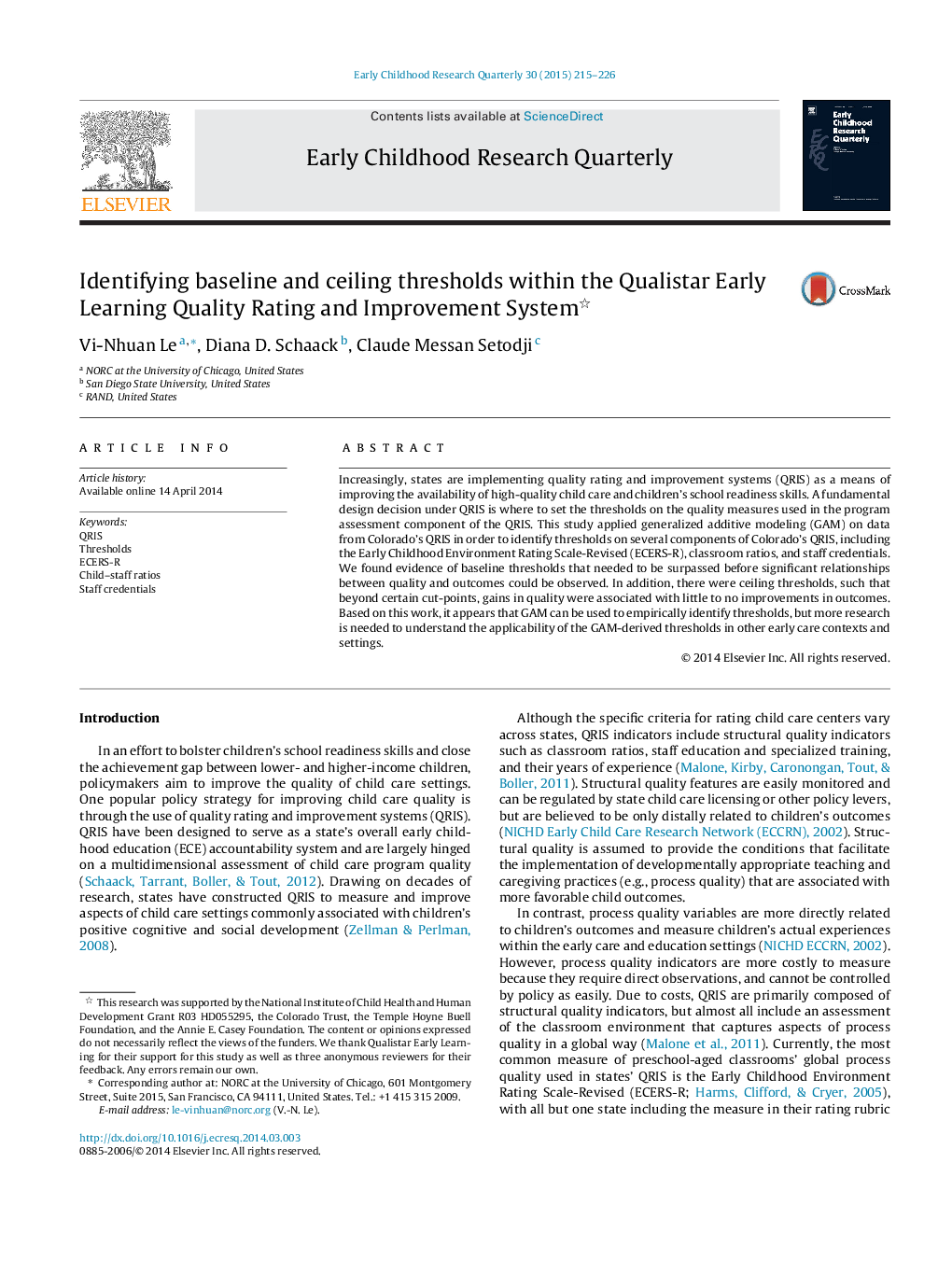| کد مقاله | کد نشریه | سال انتشار | مقاله انگلیسی | نسخه تمام متن |
|---|---|---|---|---|
| 353743 | 618942 | 2015 | 12 صفحه PDF | دانلود رایگان |
• We use generalized additive models (GAM) to empirically identify thresholds on the quality components within Colorado's quality improvement and rating system.
• We identified baseline thresholds on the ECERS-R in relation to cognitive outcomes and teachers’ experience in relation to the ECERS-R.
• We identified ceiling thresholds on the ECERS-R in relation to cognitive outcomes, and on teachers’ coursework in relation to the ECERS-R.
• GAM is able to detect statistically significant relationships obscured by linear modeling.
Increasingly, states are implementing quality rating and improvement systems (QRIS) as a means of improving the availability of high-quality child care and children's school readiness skills. A fundamental design decision under QRIS is where to set the thresholds on the quality measures used in the program assessment component of the QRIS. This study applied generalized additive modeling (GAM) on data from Colorado's QRIS in order to identify thresholds on several components of Colorado's QRIS, including the Early Childhood Environment Rating Scale-Revised (ECERS-R), classroom ratios, and staff credentials. We found evidence of baseline thresholds that needed to be surpassed before significant relationships between quality and outcomes could be observed. In addition, there were ceiling thresholds, such that beyond certain cut-points, gains in quality were associated with little to no improvements in outcomes. Based on this work, it appears that GAM can be used to empirically identify thresholds, but more research is needed to understand the applicability of the GAM-derived thresholds in other early care contexts and settings.
Journal: Early Childhood Research Quarterly - Volume 30, Part B, 1st Quarter 2015, Pages 215–226
